Fisheries in the Quinte region
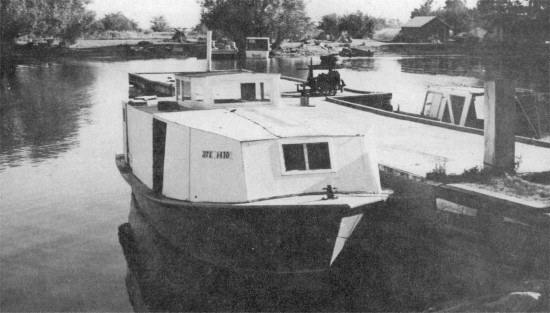
The following description has been adapted from various issues of "The Great Lakes Fisherman", Volume 2, 1974.
Fifty years ago in Prince Edward County
The counties of Prince Edward and Northumberland are the most prolific fishing grounds in Lake Ontario. The coast of Quinte’s Isle and the adjacent areas are dotted with scores of fisheries, many of them dating back into the earliest times of Loyalist settlement in this area, well over a century and a half ago. In speaking of the fisheries of Eastern Lake Ontario, one cannot help but preface any remarks by the observation that this is, without a doubt one of the most beautiful spots on the Great Lakes, endowed not only with the natural advantages of sparkling blue water, fine stands of hard and soft woods, and rugged outcroppings of rock but also possessed of some of the finest pioneer architecture to be found in the Great Lakes area. Although it is a natural Mecca for tourists it has not yet [Note: this was written half a century ago. Ed.] suffered from the commercialism that has crept into other areas.
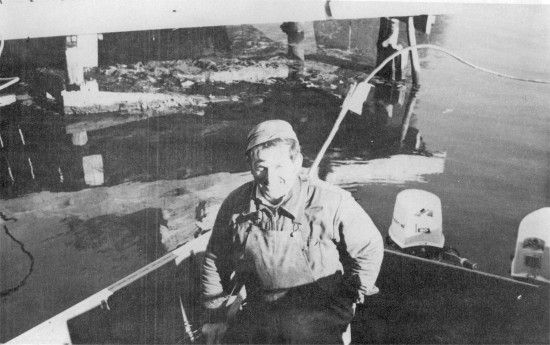
Although the production of yellow perch, white perch, eels, carp, herring and other species centers around locations such as Picton, Cherry Valley, Wellington, Carrying Place and Brighton, fisheries are in fact spread out along the entire length of the hundred odd miles (160 km.) of deeply indented coastline. On the East side of Quinte’s Isle, along Indian Point, gill net production with large, Lake Erie style tugs is common. Pete Vandenburg, Dave Harrison, Carl Thurston and Roy Vancott are typical of the fishermen in this area. Fishing through the ice is a major undertaking in this part of the peninsula during the winter months.
South from Indian Point, a number of small fisheries dot the coastline. The major concentration of activity is centered at Point Traverse on Long Point, where the Long Reach is separated from Lake Ontario by the historic Duck Islands. Here an ideal natural harbour has become the home base of a fleet of tugs and open boats. Gill nets predominate here as well, but trap netting is also carried out. It is the only place on the Great Lakes where fishing for eels is an important economic undertaking. In the spring months when eel catches are at their highest, the Allan Jarvis Fish Company which handles the production of this area, may pack as many as 8000 pounds of eels daily. Bruce Hamilton, of Long Point, reports landing 3900 pounds of the delicacy from one trap net in a single days work. Most of the harvest is restricted to hooks, each licence holder being allowed a total of 600 hooks. When catches are very heavy as they were in a run several years ago producers find they cannot keep up with this number. In the last few years catches have been steady but not spectacular. Producers get up to fifty cents dockside for eels and the market for them is termed as being very good, George Howard, Bill Aman and his son Larry, Bruce Anderson and his son, are among the chief producers here.
To provide complete variety, the Western part of Prince Edward County has both gill and hoop net operators. Due to the fact that Lake Ontario is made up primarily of deep cold water, unsuited to fishing, reefs and inshore shallows are the only spots that can be exploited. Even the larger tugs set only a short strap of nets in one place before moving off to some other likely looking area.
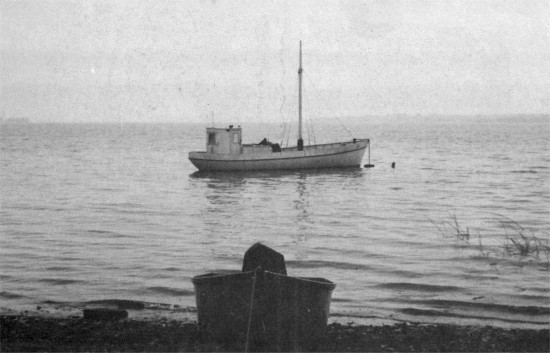
The western area of the County is dominated by large Lakes that are in fact indentations in the coastline with one or two narrow inlets to the open water beyond. Hoop nets are set in these marshy bays or lakes but gill net operators must go into open water béyond. In most places they are restricted from fishing within a thousand yards of the outlet, where perch and herring abound. Since they must work in such shallows, most producers use open boats about sixteen feet long equipped with outboards. Watching them buck huge breakers in a stiff wind is an experience designed to make you think twice about the joys of commercial fishing. One and two man crews often land catches as high as six or eight hundred pounds of perch or herring. Due to a variety of problems the dockside price is only two-thirds of the price paid to Lake Erie producers. Large quantities of white perch are often landed and sold for five cents a pound.
Lake Ontario production is seldom on such a level of production that producers can make a living strictly from fishing efforts although one or two manage to do this. Most have farm interests, small tourist establishments or take occasional jobs with Ontario Hydro, the cement plant, the Department of National Defence base at Trenton or otherwise find ways to augment their income. One of the few lady producers on the Great Lakes is Mrs. Marion Mills of Carrying Place, who is very active in the industry. She goes out in the same weather everyone else has to endure and sets nets with the best of them.
Although the government took the Port Dover based tug, Leole Charles, built and owned by the Mummery Brothers of that port, to Lake Ontario to experiment with trawling, it is about the only method of fishing not frequently found in these waters. Walter Zilow, of Brighton, has constructed two vessels of a unique design that he employs both in gill netting and trawling operations. By all reports the latter method has not met with great success.
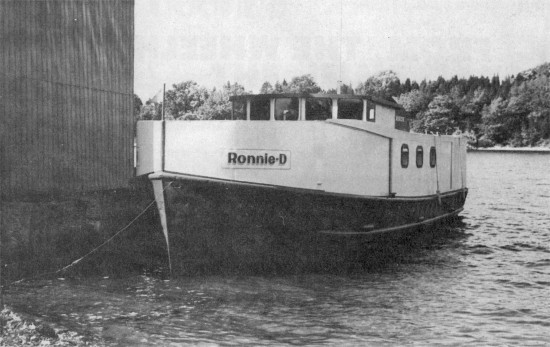
In a small area one can find in the Picton area everything from hoop nets. to trawls, from eels to herring and, judging by the fact that almost all of them took the time and trouble to come to last summer’s Great Lakes Fish Exhibition making it the best represented area outside of Lake Erie, some of the most dedicated fishermen on the Great Lakes.
In 1975, one of the most respected fishermen in the County, Ray Lancaster, announced that he had decided to retire after many years of service to the industry. His son, Roxie is expected to continue the tradition – representing at least the fourth generation of fishermen in the family.
Quinte’s Isle, at the eastern end of Lake Ontario, is a peninsula jutting out into the cold, deep waters of that Lake. It boasts nearly five hundred miles of deeply indented and ruggedly beautiful coastline and has for many decades been the home of an active fishery with traditions dating back well over a century to the days of United Empire Loyalist settlement.
Not all the fishermen of the Picton area, however, have family records dating back that far. Pete Vandenburg has been commercial fishing for a little more than a decade but he has already proved himself to be a top producer and an innovative fisherman. While.the area probably has the greatest variety of species and techniques employed to harvest them, few operators use large boats. Pete has helped to change that tradition by bringing the forty foot RONNIE D to his home on Indian Point, south of Picton. Built in Erieau in 1958, the all steel tug is maintained in immaculate condition and gives Pete the capability of fishing reefs and shallows in the open waters that smaller boats cannot reach. Most of the production is yellow and white perch although some trout and carp are taken. Short straps of nets are set in a number of locations rather than the long gangs of nets that could be set in more shallow waters.
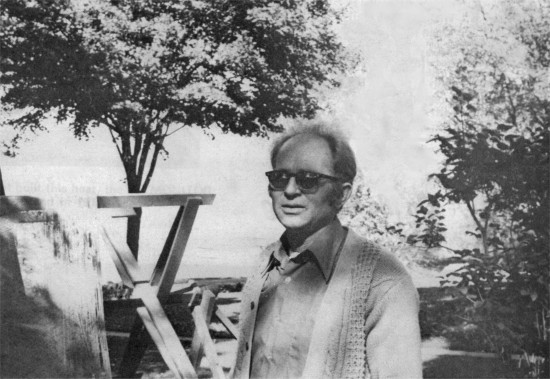
From his attractive home on Indian Point one may look out over the sparkling clear waters of Adolphus Reach at some of the prettiest scenery to be found anywhere, but in spite of the ideal location and his evident success, it has not been an easy road for Pete Vandenburg. Few if any fishermen in the area can support themselves by the income to be drawn from commercial fishing. When fishing is good Pete, his son and their employees pour their full efforts to fishing but at other times of the year it is necessary to seek employment elsewhere. The nearby Ontario Hydro generating plant and a cement plant are favourite alternate sources of employment while fishermen await the return of the few months in the year when they can make a reliable income from fishing.
For Pete Vandenburg the formula of hard work, determination and a willingness to gamble a larger investment than most on the Quinte’s Isle fishery has meant a degree of success in which he can be justifiably proud.
